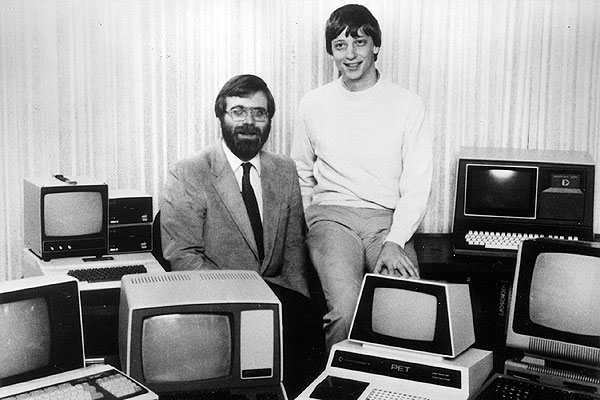From humble beginnings to tech giant: Microsoft's trailblazing journey

In the annals of technological history, few narratives are as enthralling as the creation and rise of Microsoft. This powerhouse has been instrumental in shaping our interaction with technology today and owes its inception to two young, passionate, and ambitious individuals: Bill Gates and Paul Allen.
In 1975, Gates and Allen, childhood friends hailing from Seattle, were captivated by the introduction of the MITS Altair 8800, a microcomputer that set their imaginations alight. They envisioned transforming this piece of technology into something more user-friendly and accessible to the everyday person. Their innovative idea was to design a programming language that would simplify interaction with the computer.
Undeterred by the lack of a tangible product, Gates and Allen approached Ed Roberts, the owner of MITS, with their proposal. They pledged to deliver a BASIC interpreter, a software that would enable the Altair 8800 to run programs in the BASIC language. Their confidence and vision won Roberts over, leading to a marathon coding session where Gates and Allen worked relentlessly to create the first version of Micro-Soft BASIC.
In April 1975, the duo established Microsoft, a blend of "microcomputer" and "software". Initially headquartered in Albuquerque, New Mexico, close to MITS, Microsoft spent its formative years developing programming language interpreters for various systems. In 1976, they officially registered the trade name, Microsoft.
Microsoft's turning point arrived in 1980 when IBM, a titan in the computer industry, sought their assistance. IBM was developing a personal computer and required an operating system. Although Microsoft didn't have one, they recognized an opportunity and purchased an operating system called 86-DOS from Seattle Computer Products. They adapted it to create MS-DOS (Microsoft Disk Operating System) and licensed it to IBM. This marked Microsoft's entry into the operating system market.
In 1981, Microsoft was incorporated, with Bill Gates as President and Chairman of the Board, and Paul Allen as Executive Vice President. The company relocated to Bellevue, Washington, and embarked on its journey to becoming a major player in the technology industry.
The launch of the first version of Windows in 1985 was another milestone. Windows offered a graphical user interface and multitasking environment, a significant advancement from the command-line interface of MS-DOS. It paved the way for software development and user experience.
Microsoft's journey from then on is well-documented history. The company revolutionized the software industry, introducing a range of products that have become integral to our lives, such as the Microsoft Office Suite, Internet Explorer, and later, the Windows Phone.
Reflecting on Microsoft's beginnings, they were characterized by vision, ambition, and strategic decisions. The company's journey offers invaluable lessons in entrepreneurship, innovation, and resilience, and it stands as a potent reminder of how technology, when coupled with creativity and vision, can transform the world.
